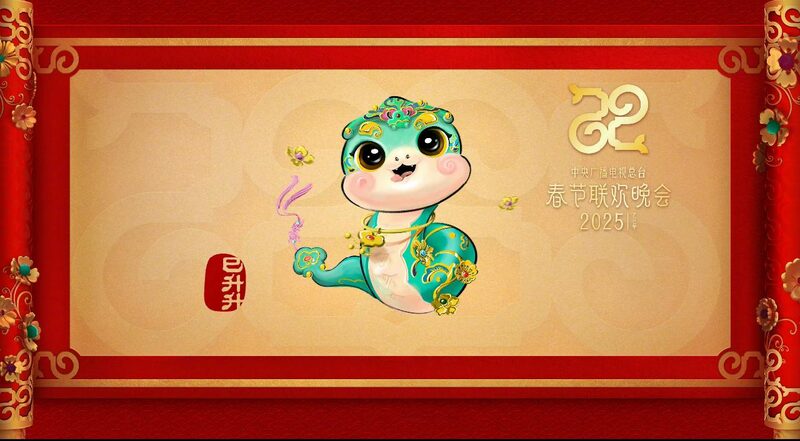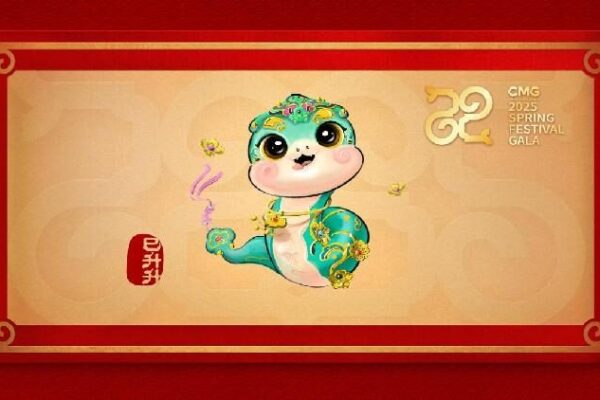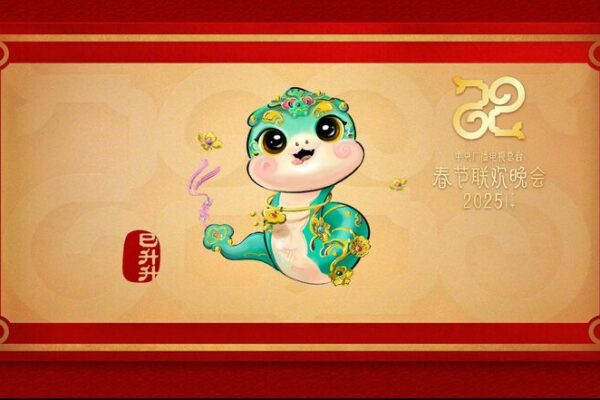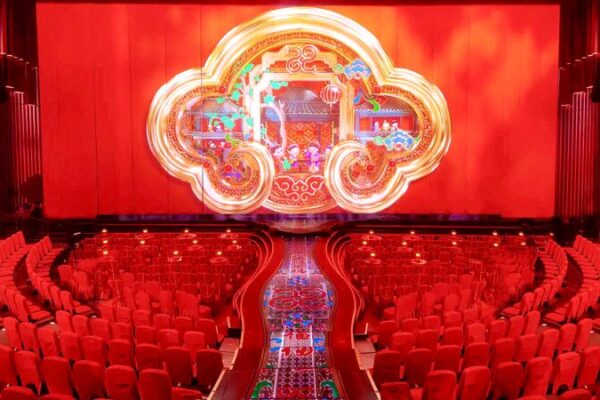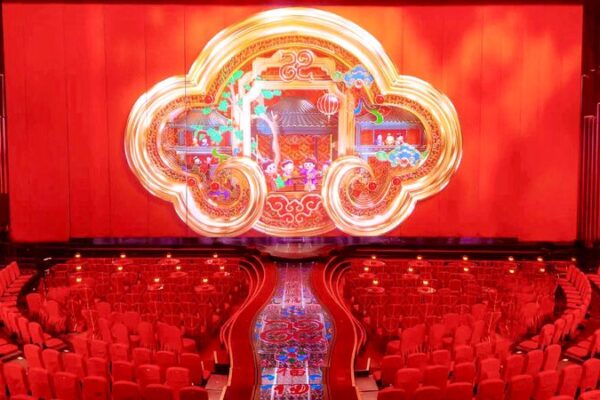Chinese communities worldwide are gearing up to celebrate the Year of the Snake on January 29, 2025. Adding to the excitement, China Media Group (CMG) has unveiled Si Shengsheng, the official mascot for this year’s Spring Festival Gala, the much-anticipated annual variety show that lights up Lunar New Year’s Eve.
A Mascot Rooted in Ancient Script
Si Shengsheng’s design draws inspiration from “si,” an ancient character in oracle bone script representing the word “snake.” Oracle bone script, one of the earliest forms of Chinese writing, was etched onto animal bones and shells over 3,000 years ago during the Shang Dynasty.
With its playful appearance and teal-green hues reminiscent of jade and celadon, Si Shengsheng bridges the gap between ancient aesthetics and modern appeal. This fusion pays homage to China’s rich cultural heritage while resonating with today’s youth.
Symbolism of Good Fortune
The 2025 Spring Festival Gala logo echoes the “ruyi,” a symbol of good luck and authority in Chinese culture. By mirroring two “si” characters, the design creates a pattern that signifies eternal harmony and renewal.
Originally a practical tool, the ruyi evolved into a ceremonial scepter treasured in imperial courts. Its elegant curves have inspired countless works of art, from intricate textiles to iconic architecture like the “Snow Ruyi” Ski Jumping Center from the Beijing 2022 Winter Olympics.
Si Shengsheng’s rosy cheeks feature a spiral motif inspired by a ruyi discovered at Famen Temple in Shaanxi Province. Unearthed alongside other historical treasures, this artifact offers a glimpse into the artistry of the Tang Dynasty over a thousand years ago.
Connecting Past and Present
The creators of Si Shengsheng also looked to the mysterious Sanxingdui bronze sculptures for inspiration. Discovered in Sichuan Province, these ancient artifacts date back up to 4,500 years and depict fantastical creatures with prominent eyes—mirrored in the mascot’s bright-eyed expression.
In ancient China, snakes were revered and featured prominently in mythology. Legendary figures like Fuxi and Nuwa, considered the creators of humanity, are often depicted with human bodies and serpentine tails. Such myths highlight the snake’s significance in Chinese culture.
By integrating these historical elements, the Spring Festival Gala aims to keep ancient traditions alive, bringing them into the modern era for new generations to appreciate.
Reference(s):
cgtn.com
